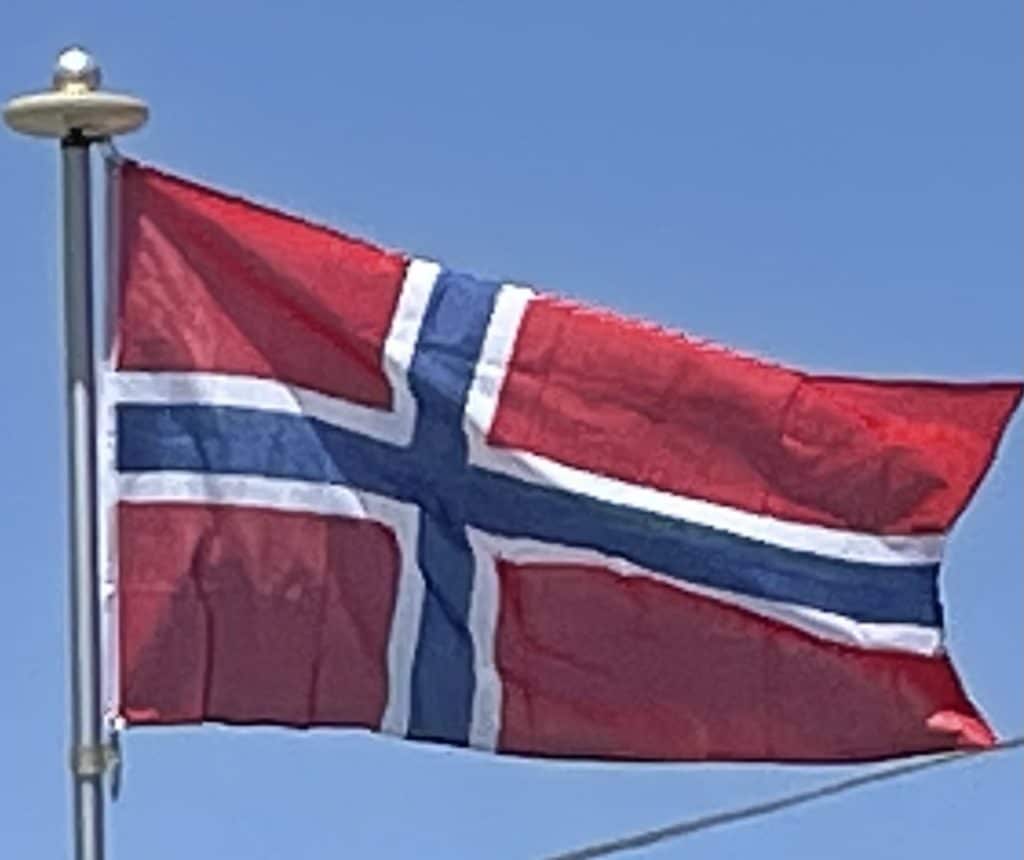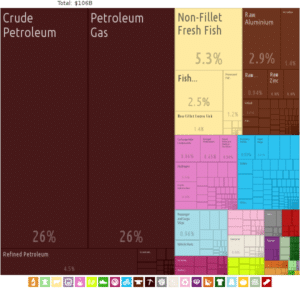
The country is richly endowed with natural resources including petroleum, hydropower, fish, forests, and minerals. Large reserves of petroleum and natural gas were discovered in the 1960s, which led to a boom in the economy. Norway has obtained one of the highest standards of living in the world in part by having a large amount of natural resources compared to the size of the population. In 2011, 28% of state revenues were generated from the petroleum industry.
Transportation:
Due to the low population density, narrow shape and long coastlines of Norway, its public transport is less developed than in many European countries, especially outside the major cities. The country has long-standing water transport traditions, but the Norwegian Ministry of Transport and Communications has in recent years implemented rail, road, and air transport through numerous subsidiaries to develop the country’s infrastructure. Under discussion is development of a new high-speed rail system between the nation’s largest cities.
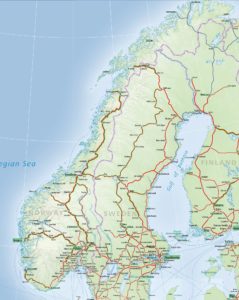
Norway’s main railway network consists of 4,114 kilometers (2,556 mi) of standard gauge lines, of which 242 kilometers (150 mi) is double track and 64 kilometers (40 mi) high-speed rail (210 km/h) while 62% is electrified at 15 kV 16.7 Hz AC. The entire network is owned by the Norwegian National Rail Administration. All domestic passenger trains except the Airport Express Train are operated by Norges Statsbaner (NSB). NSB operates long-haul trains, including night trains, regional services and four commuter train systems, around Oslo, Trondheim, Bergen and Stavanger.
Norway has approximately 92,946 kilometers (57,754 mi) of road network, of which 72,033 kilometers (44,759 mi) are paved and 664 kilometers (413 mi) are motorway. The most important national routes are part of the European route scheme. The two most prominent are the European route E6 going north–south through the entire country, and the E39, which follows the West Coast.
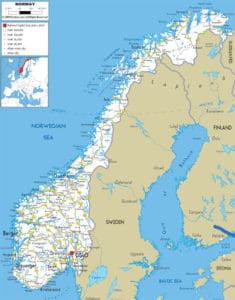
Norway has the world’s largest registered stock of plug-in electric vehicles per capita. In March 2014, Norway became the first country where over 1 in every 100 passenger cars on the roads is a plug-in electric. The plug-in electric segment market share of new car sales is also the highest in the world. According to a report by Dagens Næringsliv in June 2016, the country would like to ban sales of gasoline and diesel powered vehicles as early as 2025. In June 2017, 42% of new cars registered were electric.
Of the 98 airports in Norway, 52 are public, and 46 are operated by the state-owned Avinor. Seven airports have more than one million passengers annually. A total of 41,089,675 passengers passed through Norwegian airports in 2007, of whom 13,397,458 were international.
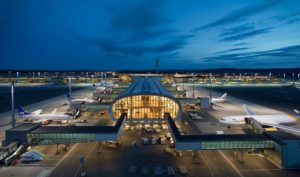
The central gateway to Norway by air is Oslo Airport, Gardermoen. It is hub for the two major Norwegian airlines: Scandinavian Airlines and Norwegian Air Shuttle, and for regional aircraft from Western Norway. There are departures to most European countries and some intercontinental destinations. A direct high-speed train connects to Oslo Central Station every 10 minutes for a 20 min ride.
Flag of Norway:
The flag of Norway is red with an indigo blue Scandinavian cross fimbriated in white that extends to the edges of the flag; the vertical part of the cross is shifted to the hoist side in the style of the Dannebrog, the flag of Denmark.
